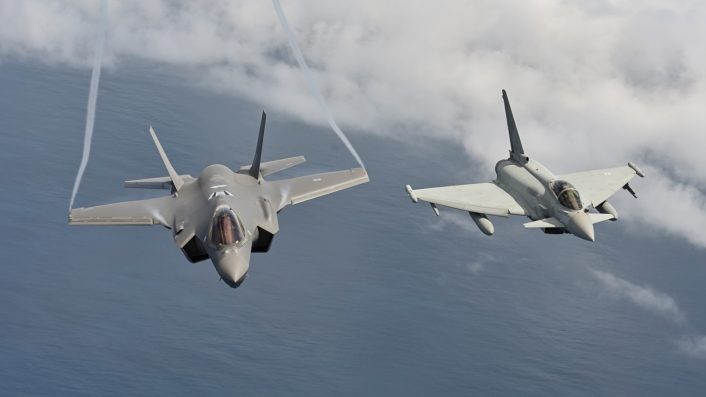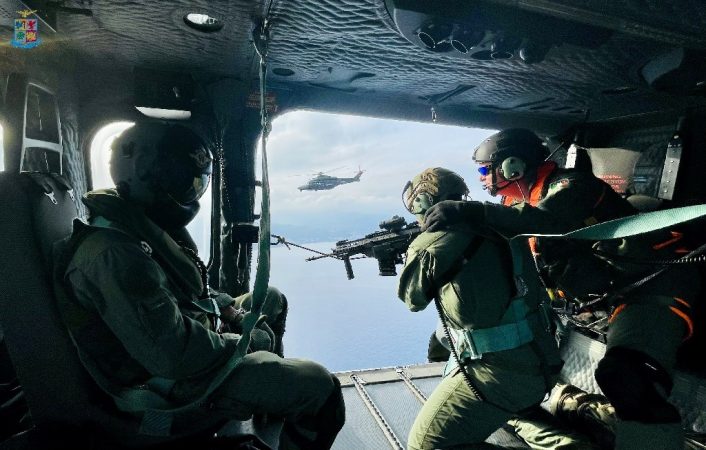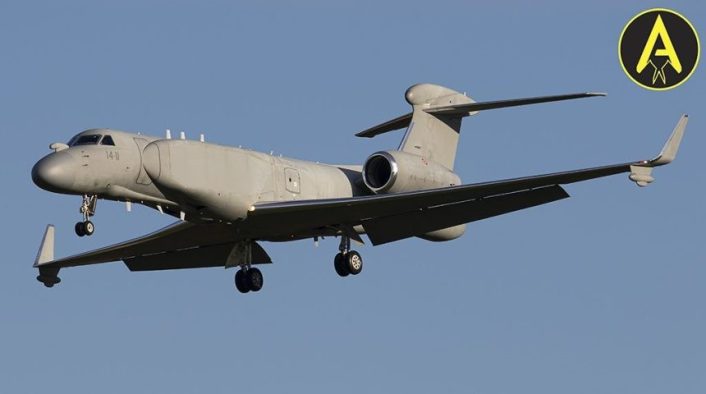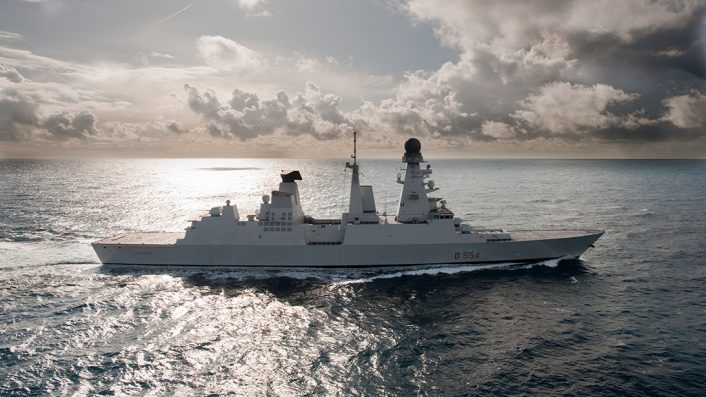As Rome prepares to host Pope Francis’ funeral, Italy activated an extensive security plan to ensure the safety of all participants.
On Apr. 26, 2025, Rome will be under tight security as the Vatican will celebrate Pope Francis’ funeral. For the occasion, 160 international delegations, which include around 50 heads of state and 10 monarchs, will arrive in the city to attend the event, together with more than 200,000 people.
Italian law enforcement agencies and armed forces are at work to grant the security of the event, with a no-fly zone established over Rome, snipers on the rooftops, 4,000 officers on the ground, counter-UAS teams and an air defense guided missile destroyer off the coast. This extensive operation is being conducted in close coordination with the Italian Civil Protection Department and involves the full spectrum of national security forces, with the Italian Police, Carabinieri, Guardia di Finanza (Customs Police), Army, Navy and Air Force working together to establish a protective security “dome” over the Capital.
Focus on the aerial surveillance security plan
The airspace restrictions being enforced around Rome during the funeral of Pope Francis are part of a comprehensive, layered defense system, active from Apr. 25 at 12:00 UTC until Apr. 26 at 20:00 UTC (estimated). The first level of this security machine is the establishment of a 75 nautical miles radius Air Defense Identification Zone (ADIZ) centered on the city of Rome. This zone acts as a primary filter, allowing authorities to monitor and identify any incoming aircraft.
Whitin this broader perimeter, a 35 NM circle centered over Rome will prohibit flight to all VFR (Visual Flight Rules) aircraft and drones. The most stringent restriction is the creation of a No-Fly Zone over Rome, with a radius of 6.5 NM. Reserved areas have also been established for the aircraft on patrol to enforce the restrictions.
These measures are similar to those implemented during high-profile events like the G7 summits, where stringent aerial security is paramount. In order to conduct real time airspace monitoring, the Italian Air Force has deployed a suite of advanced airborne assets capable of responding rapidly to any potential threats.

Fighter jets ensuring airspace security over Rome
To ensure a prompt response to any potential aerial threats during the ceremonies, Italian Air Force fighter jets will be tasked to conduct Combat Air Patrol (CAP) missions near the Capital, within dedicated airspace zones established via NOTAM (Notice to Airmen), to restrict the airspace and facilitate the operations. The airborne assets will reinforce the already active daily Quick Reaction Alert cells, which are able to respond within minutes in case of any airspace violation.
The aircraft assigned to this mission are the Eurofighter F-2000 Typhoon and the F-35A Lightning II, the most advanced platforms of the Italian Air Force for air superiority. These assets are expected to be deployed from their main operational bases across the country.
The bases most likely to be involved are Amendola, Gioia Del Colle and Grosseto, with Pratica di Mare possibly being involved as forward base or as alternate. While interceptions would be carried out by the aircraft already in flight assigned to the CAP missions, other aircraft will be ready to scramble should the need arise.
All fighter jets involved in the operation will be armed with live munitions, including short and medium range air-to-air missiles. This configuration enables pilots to effectively respond to possible threats. Moreover, the presence of armed fighter jets is a valid and tangible deterrent against any potential hostile or unauthorized action during a highly sensitive international event expected to draw large crowds and numerous dignitaries.

The Slow Mover Interceptor role
Even If the abovementioned fighter assets are quite effective against slower aircraft, such as light airplanes and helicopters, the Italian Air Force will employ a second defense layer specifically designed to counter “slow mover” threats that may attempt to penetrate the restricted airspace around Rome. Each Italian Air Force CSAR (Combat Search and Rescue) squadron has deployed an HH-139 to Pratica di Mare, in order to support the ongoing operations.
In fact, the HH-139 helicopters have been assigned the Slow Mover Intercept mission, and are strategically deployed to monitor and intercept low speed aircraft within the designated security perimeter. These helicopters are also equipped with visual communication panels, allowing aircrews to establish non-verbal contact with intercepted aircraft if they are unable to reach them by radio.

In scenarios where further escalation is necessary, the HH-139s are capable of air-to-air engagement, thanks to the presence of specialized crews known as “Slow Mover Interceptor Operators”. These operators are specially trained in the use of precision weapons capable of neutralizing slow speed threats.
While targeting an aircraft in flight, even at low speed, with a sniper rifle on a moving platform is not an easy task, the operators are trained to hit designated targets on the aircraft, such as the engine, to force an emergency landing. The goal is always to safely neutralize the threat, reducing the risk for people on the ground.

The surveillance curtain
The G-550 CAEW (Conformal Airborne Early Warning), belonging to the 71st Squadron at Pratica di Mare Air Base, will keep a close eye on the airspace thanks to its surveillance capabilities. Should the need arise, in conjunction with the 22° DAMI (Difesa Aerea Missilistica Integrata – Integrated Air and Missile Defense) cell based in Licola, which acts as a Control and Reporting Center (CRC), the CAEW will guide fighters during interceptions of “zombies” (as the targets of the interceptors are dubbed in fighter lingo) or verified threats directed toward the Capital during activities related to the Pope’s funeral.
To complete the real-time picture and provide extended coverage of the ground movements, the Italian Air Force will also deploy MQ-9A Predator B (the ItAF has not adopted the name Reaper) Remotely Piloted Aircraft (RPA). According to the established transit corridors published in the NOTAMs (Notice to Airmen), the Predators will operate Amendola and Sigonella, where the 28th Squadron and the 61st Squadron, respectively, are based, gathering real time intelligence in support of the security machine that is closely monitoring the event.

Another surveillance asset involved is the P-72. Belonging to the 41° Stormo (Wing) from Sigonella Air Base and flown by a mixed Air Force/Navy crew, the P-72A is a military variant of the ATR 72-600 that can undertake multiple roles. In fact, although it was born as a MPA (Maritime Patrol Aircraft), the P-72A is equipped with ESM (Electronic Support Measures) sensors along with a communication suite that enable the aircraft to collect data from signals it receives and transmit in real-time to/from command and control centres either on the ground, in the air or at-sea, to ensure coordinated and effective operations.
The P-72A is a considerable asset for the safety of the operation, as it can enhance the so-called Recognized Picture of the area. It’s to be noted that, thanks to the Seaspray 7300E AESA (Active Electronically Scanned Array) radar, produced by Leonardo, the aircraft is able to track even air-to-ir tracks with a limited RCS (Radar Cross Section) such as small light aircraft.

In addition to the Italian Air Force’s, helicopters belonging to Police, Carabinieri and Customs will constantly monitor the situation of the crowd and will ensure the highest level of security. Since the death of the Pope, these helicopters have kept an eye on all the movements in the area to allow mourners to safely reach St. Peter’s Basilica, where the funeral will be celebrated.
Thanks to their advanced sensors, the helicopters have the capability to provide guidance to operators on the ground in the event of an emergency. The helicopters are also tasked to transport operators of the Special Forces, such as GIS (Gruppo Intervento Speciale- Italian Carabinieri’s Special Forces) and NOCS (Nucleo Operativo Centrale di Sicurezza – Italian Police Special Forces) to target possible threats on the ground.

More than 4,000 police officers, joined by 2,500 Civil Protection volunteers, will monitor the area and support the people which will attend the event. Special routes have been prepared to better manage the huge flux of people to and from St. Peter’s Basilica to reduce the risk of dangerous situations.
Furthermore, the Italian Navy is employing the Caio Duilio guided missile destroyer as a surveillance and missile defense asset. The ship is located off the coast near Fiumicino.

The next-generation threat – Counter UAS operations
A less noticeable protection, targeting newly emergent threats such as small Unmanned Aerial Systems, is assigned to the 16th Wing “Fucilieri dell’Aria,” the specialized force protection unit of the Italian Air Force, and the Italian Army. The operators are specifically qualified to conduct the C-UAS (Counter Unmanned Aerial System) mission thanks to the employment of radar detection systems, electro optical sensors and electronic interdiction devices to inhibit drone flights.
These advanced assets are strategically deployed across Rome and Vatican City, ensuring the highest level of security in sensitive areas. The drone threat has been at the center of many large disruptions because of their capability to evade detection thanks to their small dimensions. For instance, small drones blocked air traffic for hours at Heathrow airport in recent years.
Technically called portable electromagnetic deterrent systems, these emit high intensity electromagnetic pulses on the same frequencies used to control the drones, cutting the link with the pilot’s controls. This way, the drone can be safely neutralized by activating the emergency mode which can either return the drone to the point of origin or land it at the current location.

Rome’s skies welcome the world: heads of State arrive for the funeral of Pope Francis
Rome’s skies are witnessing an extraordinary convergence of global air traffic. A continuous procession of state and diplomatic aircraft, representing nearly every continent, has been steadily arriving, each carrying world leaders, monarchs and dignitaries who have come to pay their final respects.
To manage the exceptional volume and security requirements of these high-profile arrivals, the Italian authorities have designated Roma Ciampino airport, Rome Fiumicino airport and Pratica di Mare Air Base as the official entry points for state delegations. These facilities are specifically equipped to handle the complex logistical effort associated with high-profile arrivals of this magnitude

As of now, approximately 64 aircraft of the participating delegations have been spotted on flight tracking sites, headed to Rome. A total of 160 delegations are expected to attend the ceremony, reflecting the scale of international participation.
Below you can see a screen taken by ItaMilRadar using ADS-B, highlighting a dozen of government flights inbound to Rome area.
Dozens of official delegations are arriving in Rome for the funeral of Pope Francis, which will be held tomorrow. pic.twitter.com/7eQAn1Djcn
— itamilradar (@ItaMilRadar) April 25, 2025










